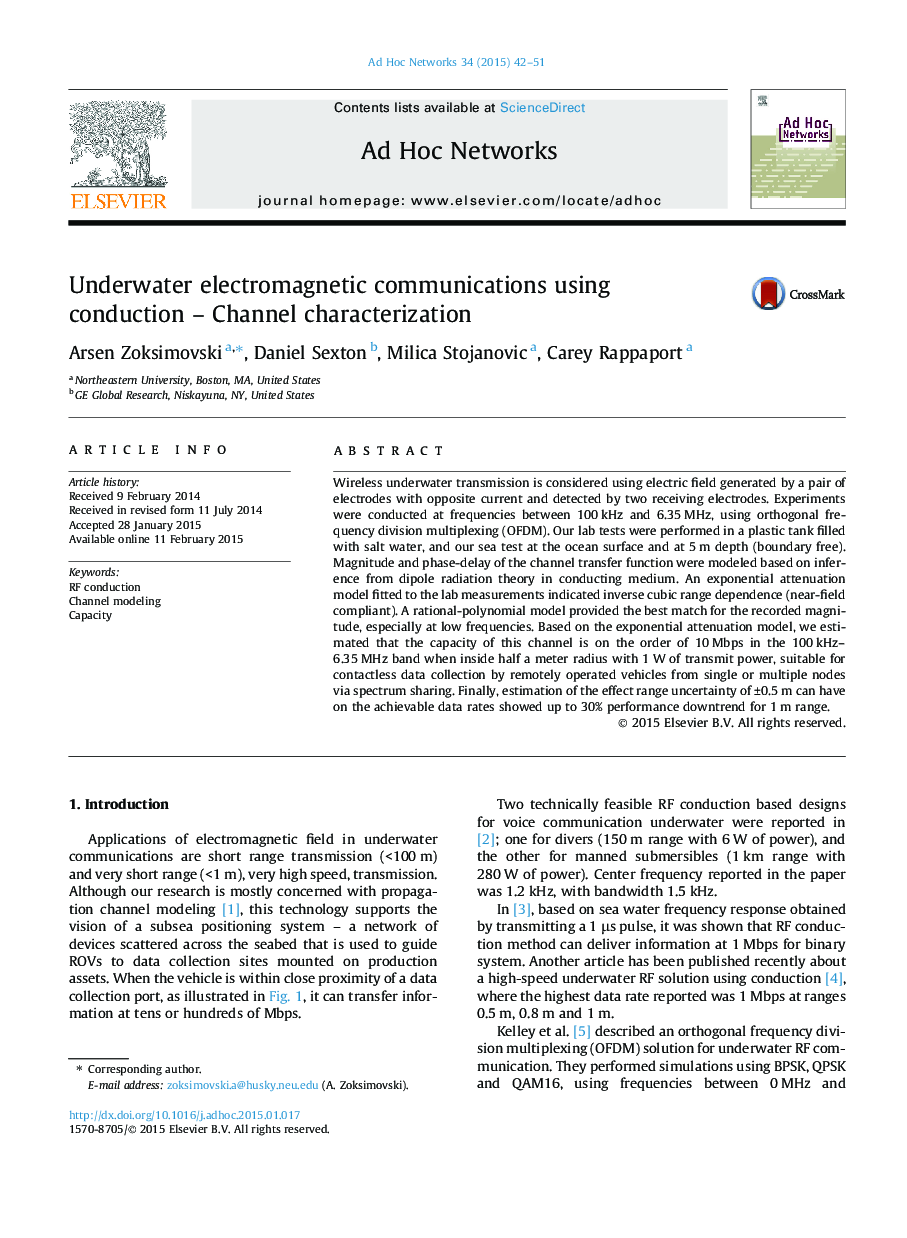| Article ID | Journal | Published Year | Pages | File Type |
|---|---|---|---|---|
| 445600 | Ad Hoc Networks | 2015 | 10 Pages |
Wireless underwater transmission is considered using electric field generated by a pair of electrodes with opposite current and detected by two receiving electrodes. Experiments were conducted at frequencies between 100 kHz and 6.35 MHz, using orthogonal frequency division multiplexing (OFDM). Our lab tests were performed in a plastic tank filled with salt water, and our sea test at the ocean surface and at 5 m depth (boundary free). Magnitude and phase-delay of the channel transfer function were modeled based on inference from dipole radiation theory in conducting medium. An exponential attenuation model fitted to the lab measurements indicated inverse cubic range dependence (near-field compliant). A rational-polynomial model provided the best match for the recorded magnitude, especially at low frequencies. Based on the exponential attenuation model, we estimated that the capacity of this channel is on the order of 10 Mbps in the 100 kHz–6.35 MHz band when inside half a meter radius with 1 W of transmit power, suitable for contactless data collection by remotely operated vehicles from single or multiple nodes via spectrum sharing. Finally, estimation of the effect range uncertainty of ±0.5 m can have on the achievable data rates showed up to 30% performance downtrend for 1 m range.
